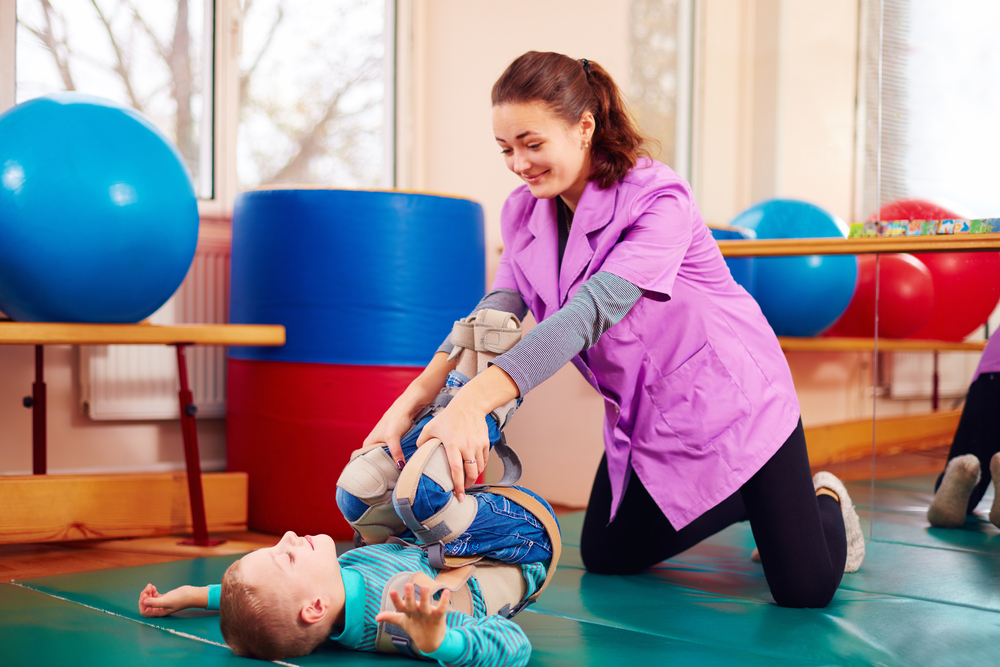Physiotherapy Plus Whole-body Vibration Lead to Better Balance in Children with Spastic Cerebral Palsy, Study Finds

Physiotherapy given together with whole-body vibration or a program aimed at core stability can improve balance in children with spastic cerebral palsy (CP), although whole-body vibration produced better results than core stability, a study from Egypt found.
The study, “The effect of two therapeutic interventions on balance in children with spastic cerebral palsy: A comparative study,” was published in the Journal of Taibah University Medical Sciences.
Impairments in movement and posture associated with cerebral palsy occur in the developing fetal or infant brain and lead to “limitations in activities such as independent walking, stair climbing, running, or walking on an uneven surface,” the researchers wrote.
A young child typically begins to build core strength by continuously practicing active movements against gravity. However, children with CP have limited movement patterns, reducing strength and endurance in the main muscle groups. This can lead to problems with postural control (or the ability to position the body to give stability and orientation) in these children.
Core stability can improve both postural control and balance. Whole-body vibration is a practice where the individual stands, sits, or lies on a machine with a vibrating platform. This vibration transmits energy to the body, and strengthens muscles by forcing them to contract and relax several times per second.
It has been previously shown that this approach can improve the formation and maintenance of neuromuscular junctions — the site where nerve cells and muscles communicate — resulting in enhanced muscle strength in different situations, such as after a stroke.
Researchers with the Faculty of Physical Therapy at Cairo University investigated the effects of whole-body vibration and of a program to improve core stability on balance in 60 children, ages 5 to 8, with spastic CP (the most common type of pediatric CP). Children with both hemiplegia (where one side of the body, one arm and one leg, is affected) and diplegia (where both legs are affected) participated in the study.
Children were randomly assigned to two different regimes for 12 weeks. In both groups, a physiotherapy program was provided for one hour each day, three times a week. This involved neurodevelopmental techniques, balance exercises, and facilitation of milestones and of postural reaction.
One group of children were then given 10 minutes of whole body vibration. The other group received a 30-minute core stability program.
A balance test was performed before and after the different approaches. Researchers used the Biodex Balance System, which assesses the ability to stabilize the angle of a tilting platform while standing on it. This test measures multiple variables, including anteroposterior (from front to back) stability, mediolateral (from side to side) stability, and overall stability.
In each group, the therapeutic program resulted in a significant improvement in all of the stability variables compared to the pre-treatment levels. The researchers proposed that this improvement was due to a strengthening in trunk muscles, leading to better spinal muscle contraction, and in limb muscles “resulting from the regular physiotherapy program.”
However, improvements in balance were significantly greater in those given whole-body vibration plus physiotherapy.
Following the treatment, no statistical significant differences were seen between the stability indices in children with hemiplegic and diplegic cerebral palsy.
Overall, while “whole-body vibration and core stability exercises are recommended for the treatment of children with spastic cerebral palsy,” combining whole-body vibration with a “regular physiotherapy program yielded a significantly better improvement of balance than the core stability program with the same regular physiotherapy program,” the researchers concluded.


